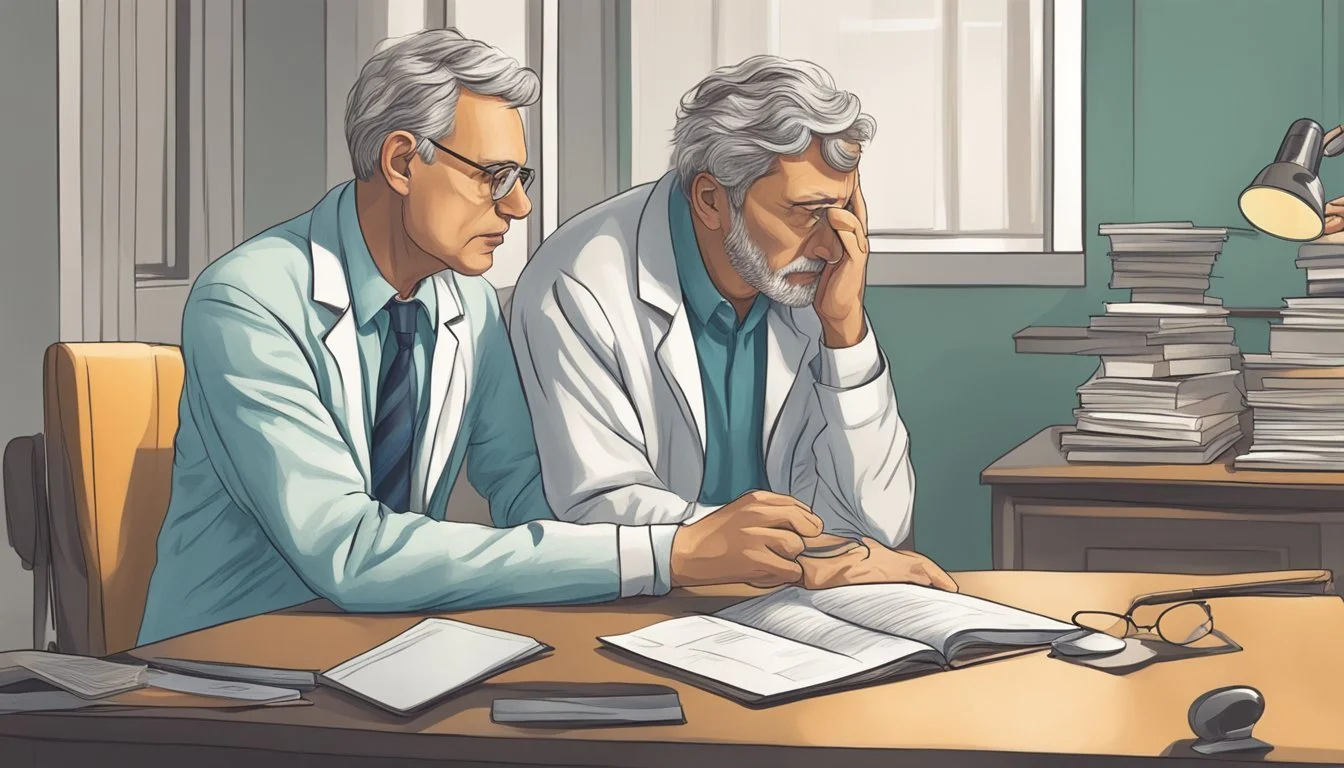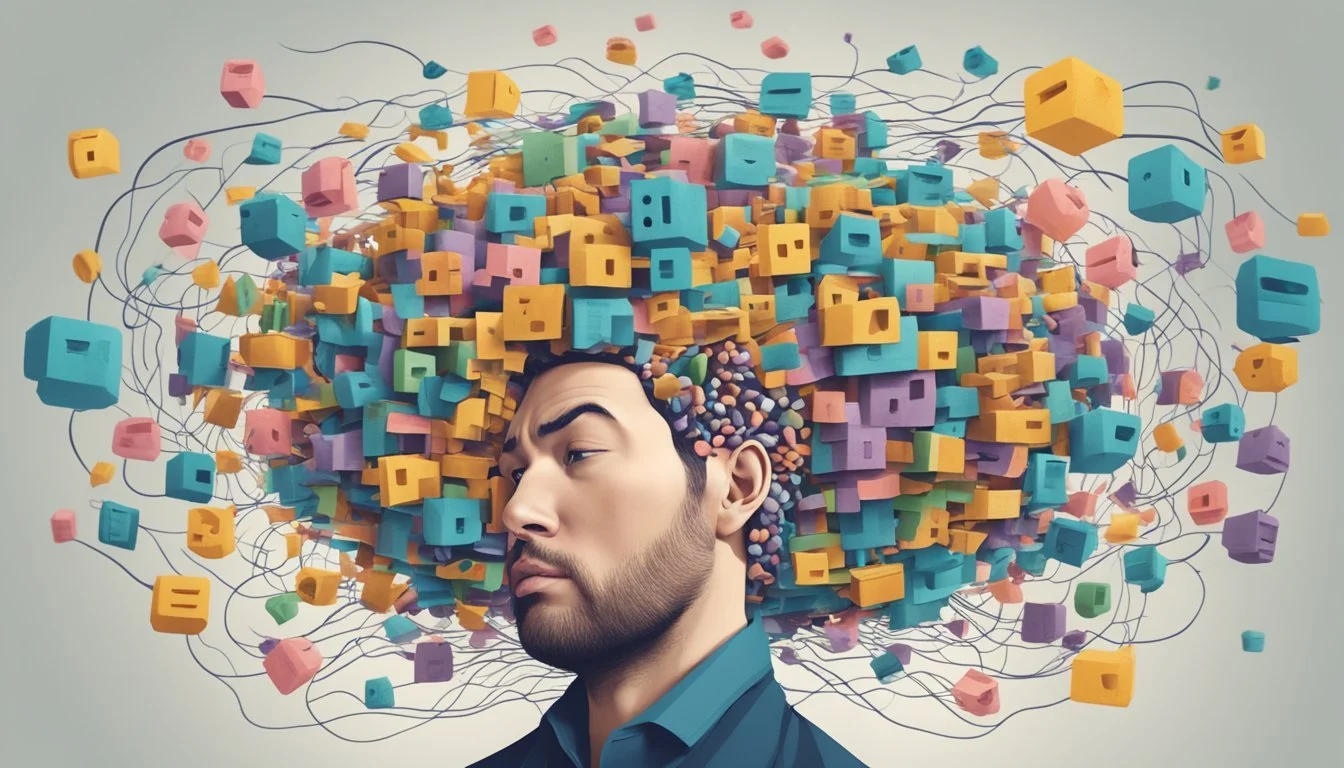Paranoid Schizophrenia: Key Symptoms and Effective Treatment Approaches
Paranoid schizophrenia, once considered a distinct subtype of schizophrenia, is no longer recognized as a separate diagnosis in the current Diagnostic and Statistical Manual of Mental Disorders (DSM-5) published by the American Psychiatric Association. This change reflects a shift in how mental health professionals understand and classify schizophrenia spectrum disorders.
Schizophrenia is a complex mental health condition characterized by disruptions in thought processes, perceptions, and emotional responsiveness. While paranoid symptoms can be a significant aspect of schizophrenia for some individuals, the condition encompasses a broader range of symptoms and experiences.
Individuals with schizophrenia may experience delusions, hallucinations, disorganized speech, and behavior, as well as diminished emotional expression. Treatment typically involves a combination of antipsychotic medications, psychotherapy, and social support to manage symptoms and improve quality of life. Early diagnosis and intervention are crucial for better long-term outcomes in schizophrenia.
Understanding Schizophrenia
Schizophrenia is a complex mental health condition characterized by distorted perceptions of reality. It affects thinking, emotions, and behavior, often leading to significant impairment in daily functioning.
Definition and Overview
Schizophrenia is a chronic psychiatric disorder that alters a person's thoughts, feelings, and actions. It is classified as a psychotic disorder in the Diagnostic and Statistical Manual of Mental Disorders (DSM-5).
Key symptoms include hallucinations, delusions, disorganized speech, and impaired cognitive function. These symptoms can severely impact a person's ability to work, maintain relationships, and care for themselves.
Schizophrenia typically emerges in late adolescence or early adulthood. Early diagnosis and treatment are crucial for managing symptoms and improving long-term outcomes.
Types and Subtypes
While paranoid schizophrenia is no longer recognized as a distinct subtype, the DSM-5 now uses a dimensional approach to classify schizophrenia. This approach considers the severity of symptoms rather than specific subtypes.
Previously recognized subtypes included:
Paranoid
Disorganized
Catatonic
Undifferentiated
Residual
The current focus is on individual symptom profiles and their intensity. This allows for more personalized treatment plans tailored to each patient's specific needs.
Prevalence Across Populations
Schizophrenia affects approximately 1% of the global population. Its prevalence is relatively consistent across different cultures and geographic regions.
Gender differences exist in schizophrenia:
Men typically experience onset earlier than women
Women often have better short-term outcomes
Age of onset varies:
Late teens to early 20s for men
Late 20s to early 30s for women
Demographic variations in schizophrenia risk include:
Higher rates in urban areas
Increased prevalence among certain immigrant populations
Slightly higher risk for individuals born in winter or spring months
Research continues to explore genetic and environmental factors that may contribute to these demographic patterns.
Symptoms of Paranoid Schizophrenia
Paranoid schizophrenia involves a range of symptoms that significantly impact a person's thoughts, perceptions, and behaviors. These symptoms can be categorized into core symptoms, negative symptoms, and cognitive and affective disturbances.
Core Symptoms
The primary symptoms of paranoid schizophrenia revolve around delusions and hallucinations. Delusions are false beliefs that persist despite evidence to the contrary. In paranoid schizophrenia, these often involve:
Persecution: Believing others are trying to harm or spy on them
Grandiosity: Thinking they have special powers or importance
Reference: Interpreting insignificant events as highly meaningful
Hallucinations are sensory experiences that occur without external stimuli. Auditory hallucinations, such as hearing voices, are most common. These voices may:
Give commands
Provide commentary on the person's actions
Engage in conversations
Visual hallucinations can also occur, though less frequently.
Negative Symptoms
Negative symptoms refer to diminished or absent normal behaviors and experiences. These include:
Social withdrawal: Avoiding interactions with others
Anhedonia: Lack of pleasure in activities once enjoyed
Flat affect: Reduced emotional expression
Avolition: Decreased motivation and goal-directed behavior
Alogia: Reduced speech output
These symptoms can significantly impact a person's ability to function in daily life and maintain relationships. They often persist even when positive symptoms are well-controlled with treatment.
Cognitive and Affective Disturbances
Cognitive symptoms affect thinking processes and emotional regulation. Key features include:
Disorganized thinking: Difficulty with logical thought processes
Attention deficits: Trouble focusing or sustaining concentration
Memory problems: Issues with working memory and recall
Impaired executive function: Challenges in planning and decision-making
Affective disturbances may manifest as:
Inappropriate emotional responses
Rapid mood swings
Anxiety or agitation
These cognitive and affective symptoms can interfere with work, school, and social functioning. They contribute to the overall disability associated with paranoid schizophrenia.
Causes and Risk Factors
Paranoid schizophrenia arises from a complex interplay of genetic predisposition, environmental influences, neurochemical imbalances, and substance use. These factors can contribute to the development and progression of the disorder.
Genetic Influences
Genetic factors play a significant role in the risk of developing paranoid schizophrenia. Studies show that individuals with a family history of schizophrenia have a higher likelihood of developing the condition.
Specific genes associated with increased risk have been identified through research. However, no single gene is responsible for the disorder.
Twin studies reveal that if one identical twin has schizophrenia, the other has a 40-50% chance of developing it. This suggests a strong genetic component, but not complete genetic determination.
Environmental Triggers
Environmental factors can interact with genetic predisposition to trigger or exacerbate paranoid schizophrenia. Stressful life events, such as trauma or significant losses, may contribute to the onset of symptoms in vulnerable individuals.
Prenatal complications and maternal stress during pregnancy have been linked to increased risk. Exposure to certain viruses or toxins during fetal development may also play a role.
Urban living and social isolation are associated with higher rates of schizophrenia. Some researchers theorize that social stress or environmental pollutants in cities might contribute to this increased risk.
Brain Chemistry and Structure
Imbalances in brain chemicals, particularly dopamine, are implicated in paranoid schizophrenia. Excess dopamine activity in certain brain regions may contribute to psychotic symptoms like delusions and hallucinations.
Brain imaging studies have revealed structural differences in individuals with schizophrenia. These include enlarged ventricles and reduced gray matter volume in specific areas.
Abnormalities in neural connectivity and brain circuit function have also been observed. These alterations may affect information processing and contribute to the cognitive symptoms of the disorder.
Substance Use
Substance use can increase the risk of developing paranoid schizophrenia or worsen existing symptoms. Heavy cannabis use, especially during adolescence, has been associated with a higher likelihood of developing psychotic disorders.
Stimulant drugs like cocaine and amphetamines can trigger psychotic episodes that mimic schizophrenia symptoms. Long-term use may increase vulnerability to the disorder.
Alcohol abuse can exacerbate symptoms and interfere with treatment. It may also lead to poor medication adherence and increased risk of relapse in individuals with paranoid schizophrenia.
Diagnosis and Assessment
Diagnosing paranoid schizophrenia involves a comprehensive evaluation process. Mental health professionals use various methods to assess symptoms and rule out other potential conditions.
Clinical Evaluation
A psychiatrist or psychologist conducts an in-depth interview with the patient. They inquire about symptoms, medical history, and family background. Observations of the patient's behavior and thought processes are crucial.
The clinician may ask about delusions, hallucinations, and other symptoms. They assess the patient's mood, cognitive function, and social interactions.
Family members or close friends may provide additional information about changes in behavior or functioning.
Medical Testing
Physical exams and laboratory tests help rule out other medical conditions that could mimic schizophrenia symptoms. These may include:
Blood tests
Urine drug screening
Thyroid function tests
Brain imaging studies (CT or MRI scans)
Neurological exams can detect any underlying brain abnormalities. EEG tests may be used to check for seizure disorders.
Psychological Assessment
Standardized psychological tests evaluate cognitive abilities, personality traits, and emotional state. Common assessments include:
Intelligence tests
Personality inventories
Projective tests (e.g., Rorschach inkblot test)
These tests provide insights into thought processes and help differentiate schizophrenia from other mental health conditions.
Structured interviews, such as the Structured Clinical Interview for DSM-5 (SCID), assist in accurate diagnosis.
Diagnostic Criteria per DSM-5
The DSM-5 outlines specific criteria for diagnosing schizophrenia:
Two or more characteristic symptoms present for at least one month:
Delusions
Hallucinations
Disorganized speech
Grossly disorganized or catatonic behavior
Negative symptoms
Significant impairment in work, relationships, or self-care
Continuous signs of disturbance for at least six months
Exclusion of other mental disorders or medical conditions
Paranoid features are no longer a separate subtype but are considered specifiers within the schizophrenia diagnosis.
Treatments for Paranoid Schizophrenia
Effective treatment for paranoid schizophrenia typically involves a combination of approaches. These include medication, psychotherapy, hospital care when needed, and ongoing support services.
Medical Treatments
Antipsychotic medications form the cornerstone of treatment for paranoid schizophrenia. These drugs help reduce hallucinations, delusions, and disorganized thinking. First-generation antipsychotics like haloperidol and chlorpromazine have been used for decades.
Newer second-generation antipsychotics such as risperidone and olanzapine often have fewer side effects. Doctors may try different medications to find the most effective option with minimal side effects for each patient.
Common side effects can include weight gain, drowsiness, and movement disorders. Regular monitoring by a healthcare provider is essential to manage side effects and adjust dosages as needed.
Psychotherapy
Cognitive behavioral therapy (CBT) is a key form of psychotherapy for paranoid schizophrenia. It helps patients identify and change negative thought patterns and behaviors. CBT can improve coping skills and reduce the impact of symptoms on daily life.
Family therapy educates loved ones about the condition and improves communication. This can create a more supportive home environment for the patient.
Group therapy allows individuals to share experiences and coping strategies with others facing similar challenges. It can reduce feelings of isolation and provide peer support.
Hospitalization and Acute Care
During severe episodes, hospitalization may be necessary to ensure safety and stabilize symptoms. Inpatient care provides intensive treatment and monitoring in a controlled environment.
Crisis intervention services can help manage emergencies without full hospitalization. These may include mobile crisis teams or short-term residential care.
Partial hospitalization programs offer structured treatment during the day while allowing patients to return home at night. This can ease the transition from inpatient care to outpatient treatment.
Support and Rehabilitation
Vocational rehabilitation helps individuals develop job skills and find employment. This promotes independence and social integration.
Social skills training improves interpersonal communication and daily living skills. It can help patients navigate social situations more effectively.
Supported housing programs provide safe, stable living environments with varying levels of assistance. This can range from group homes to semi-independent apartments with on-call support.
Community support groups offer ongoing peer support and education. These groups can be valuable resources for both patients and family members.
Living with Paranoid Schizophrenia
Paranoid schizophrenia presents unique challenges in daily life, relationships, and symptom management. Individuals with this condition can benefit from various coping strategies and support systems to improve their quality of life.
Daily Life and Coping
People with paranoid schizophrenia often face difficulties in routine activities. Maintaining a structured schedule can help manage symptoms and reduce stress. This may include:
Balanced meals at consistent times
Exercise routines
Self-care is crucial. Taking prescribed medications, attending therapy sessions, and practicing relaxation techniques are essential components of daily management.
Engaging in hobbies or creative pursuits can provide a sense of accomplishment and distraction from troubling thoughts. Some individuals find journaling helpful for processing emotions and tracking symptom patterns.
Relationships and Social Factors
Paranoid schizophrenia can strain relationships due to symptoms like suspicion and social withdrawal. Open communication with family and friends about the condition is important.
Educating loved ones about paranoid schizophrenia can foster understanding and support. Setting clear boundaries and expectations in relationships helps manage potential conflicts.
Social interactions may be challenging, but maintaining connections is vital. Participating in support groups can provide a sense of community and shared experiences.
Some individuals may benefit from social skills training to improve their interactions and reduce anxiety in social situations.
Managing Symptoms
Effective symptom management often involves a combination of medication and therapy. Antipsychotic medications can help reduce delusions and hallucinations.
Cognitive Behavioral Therapy (CBT) can be beneficial in:
Identifying and challenging delusional thoughts
Developing coping strategies for hallucinations
Managing stress and anxiety
Mindfulness techniques and relaxation exercises may help individuals stay grounded during symptomatic episodes. Creating a calm environment at home can reduce triggers and promote stability.
Regular check-ins with mental health professionals allow for timely adjustments to treatment plans as needed.
Community and Support
Connecting with community resources can significantly improve quality of life. Local mental health organizations often offer:
Support groups
Educational workshops
Vocational training programs
Peer support can be invaluable. Sharing experiences with others who understand the challenges of paranoid schizophrenia can reduce feelings of isolation.
Advocacy groups provide opportunities for individuals to get involved in raising awareness and fighting stigma. This engagement can foster a sense of purpose and empowerment.
Family support groups offer guidance and coping strategies for loved ones, strengthening the overall support system.
Complications and Comorbidities
Paranoid schizophrenia can lead to serious complications and often co-occurs with other mental and physical health conditions. These issues can significantly impact quality of life and require comprehensive management.
Mental Health Challenges
Depression and anxiety frequently accompany paranoid schizophrenia. Up to 23% of patients may experience obsessive-compulsive disorder, while 15% may develop panic disorder. Post-traumatic stress disorder affects approximately 29% of individuals with schizophrenia.
Substance use disorders are particularly common, with many patients using drugs or alcohol to cope with symptoms. This can worsen psychosis and interfere with treatment effectiveness.
Suicidal thoughts and behaviors pose a severe risk. The combination of paranoid delusions, hallucinations, and mood disturbances can lead to intense psychological distress. Patients may feel hopeless or act on false beliefs, increasing the likelihood of self-harm attempts.
Physical Health Risks
Individuals with paranoid schizophrenia often face increased physical health problems. Poor self-care and lifestyle factors contribute to higher rates of:
Cardiovascular disease
Diabetes
Obesity
Respiratory issues
Antipsychotic medications, while essential for symptom management, can have side effects like weight gain and metabolic changes. Regular health monitoring is crucial to address these risks.
Cognitive impairments associated with schizophrenia may lead to difficulties in following treatment plans or recognizing physical health symptoms, further complicating care.
Potential for Harm
In some cases, paranoid delusions can lead to aggressive or violent behavior. Patients may perceive threats where none exist, reacting defensively to imagined dangers. This can strain relationships and lead to legal issues.
Severe paranoia may cause individuals to avoid necessary medical care or refuse medications, worsening their condition. Social isolation is common, as trust issues can make maintaining relationships challenging.
There's also a risk of becoming a victim of crime. Impaired judgment and vulnerability may expose individuals to exploitation or dangerous situations.
Future Outlook and Research
Recent advancements in understanding paranoid schizophrenia have opened new avenues for treatment and research. Ongoing studies focus on innovative therapies, unraveling the complex biological mechanisms, and addressing societal perceptions.
Advancements in Treatment
Emerging therapeutics with novel mechanisms of action show promise for paranoid schizophrenia. Research targets both positive and negative symptoms, aiming to improve overall patient outcomes. Clinical trials explore new antipsychotic medications with fewer side effects and better efficacy.
Personalized medicine approaches gain traction, utilizing genetic information to tailor treatments. This strategy may lead to more effective interventions and reduced trial-and-error in medication selection.
Non-pharmacological therapies, such as cognitive remediation and transcranial magnetic stimulation, are being refined to complement traditional treatments.
Understanding the Pathophysiology
Genetic research continues to uncover risk factors associated with paranoid schizophrenia. Large-scale genomic studies identify potential therapeutic targets and biomarkers for early detection.
Neuroimaging techniques provide deeper insights into brain structure and function in affected individuals. These findings contribute to a more comprehensive understanding of the disorder's biological basis.
Environmental factors, including prenatal infections and early-life stress, are being studied for their role in schizophrenia development. This research may lead to preventive strategies for high-risk populations.
Societal Perception and Stigma
Public awareness campaigns aim to reduce stigma surrounding paranoid schizophrenia. Education initiatives focus on dispelling myths and promoting understanding of the disorder.
Mental health advocacy groups work to improve access to care and support for individuals with schizophrenia. These efforts may lead to better integration of affected individuals into society.
Research examines the impact of social support on treatment outcomes. Findings could inform new approaches to community-based care and rehabilitation programs.




